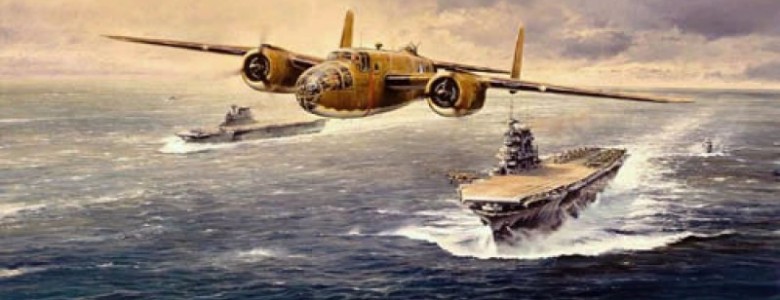doublejj
Well-Known Member
Roy was a medic......Roy was something
Roy was a medic......Roy was something
Roy was a medic......


A legendary chapter in Air Force history has come to a close.
Retired Lt. Col. Richard “Dick” E. Cole, the last survivor of the “Doolittle Raid,” died April 9, in San Antonio.
“Lt. Col. Dick Cole reunited with the Doolittle Raiders in the clear blue skies today,” said Secretary of the Air Force Heather Wilson. “My heart goes out to his friends and family as our Air Force mourns with them. We will honor him and the courageous Doolittle Raiders as pioneers in aviation who continue to guide our bright future.”
On April 18, 1942, the U.S. Army Air Forces and the Doolittle Raiders attacked Tokyo in retaliation for the Japanese attack on Pearl Harbor, which boosted American morale in the early months of World War II. The Doolittle Raid was the United States’ first counterattack on the Japanese mainland after Pearl Harbor. Eighty U.S. Army Air Forces airmen in 16 modified B-25B Mitchell bombers launched from the aircraft carrier Hornet, about 650 nautical miles east of Japan, to strike Tokyo. While it only caused minor damage, the mission boosted morale on the U.S. homefront a little more than four months after Pearl Harbor, and sent a signal to the Japanese people not only that the U.S. was ready to fight back but also that it could strike the Japanese mainland.
“There’s another hole in our formation,” said Air Force Chief of Staff Gen. David L. Goldfein. “Our last remaining Doolittle Raider has slipped the surly bonds of Earth, and has reunited with his fellow Raiders. And what a reunion they must be having. Seventy-seven years ago this Saturday, 80 intrepid Airmen changed the course of history as they executed a one-way mission without hesitation against enormous odds. We are so proud to carry the torch he and his fellow Raiders handed us.”
When Cole retired, his list of decorations included the DFC with two oak leaf clusters, the Bronze Star, and the Air Force Commendation Medal. In 2014, President Obama presented Cole and three other Raiders the Congressional Gold Medal at the White House.
http://www.doolittleraider.com
Most of the bad stuff that happened to others was forgotten pretty quickly on this side of the Pacific. But you can be assured the Chinese remember.. . . . . . . . . . . .Perhaps equally sadly, this campaign of terror has largely been forgotten in the West’s remembering of the Second World War."
The US was fighting the Japanese at the same time as fighting the germans. The russians had the germans and we took on the japanese almost by ourselves. How many japanese did the russians kill?....war is hellMost of the bad stuff that happened to others was forgotten pretty quickly on this side of the Pacific. But you can be assured the Chinese remember.
But much of history is never taught anyway. Ask folks who had killed more of the German Army, and they will almost all say the good ole USA. When in fact, 9 of every 10 German soldiers that were killed were killed by the Red Army. No history book is going to say, "we waited until they were on their knees, then we hit them from behind."
No doubt. The war in the Pacific was more than enough. We did the smart thing by waiting on Europe. I'm just saying that is not what is taught.The US was fighting the Japanese at the same time as fighting the germans. The russians had the germans and we took on the japanese almost by ourselves. How many japanese did the russians kill?....war is hell
He said that when the guards saw it was going to be the Russians, they all shucked their uniforms and tried to blend in with the refugees.
The camp was in Germany, but with two Armies closing in, everyone was trying to be somewhere else.They shouldn't have been hard to spot language aside - just look for the well fed guys.
I'll never eat WWII c-rations again....The camp was in Germany, but with two Armies closing in, everyone was trying to be somewhere else.
Well fed is a good point. Daddy never ate potato peels after the war. Potato peel soup was a big part of their diet in the camp.
lol The wife and I did have MRE's for supper last night. I turned down a lot and still have about 4 cases left from the hurricane.I'll never eat WWII c-rations again....
MRE's are a banquet compared to c-ratslol The wife and I did have MRE's for supper last night. I turned down a lot and still have about 4 cases left from the hurricane.
Yes, I had a few back in the day. I was in the Navy 81-83, so the odds are I ate some made about the time you were in.MRE's are a banquet compared to c-rats
I can't(won't) eat any canned meat (other than spam) product. Shit like Dinty Moore beef stew , just the smell gives me the heebie jeebiesMRE's are a banquet compared to c-rats
Now Spam comes in the single serve plastic pouch. Or as hikers call them, meat push pops.I can't(won't) eat any canned meat (other than spam) product. Shit like Dinty Moore beef stew , just the smell gives me the heebie jeebies
MRE's are a banquet compared to c-rats

